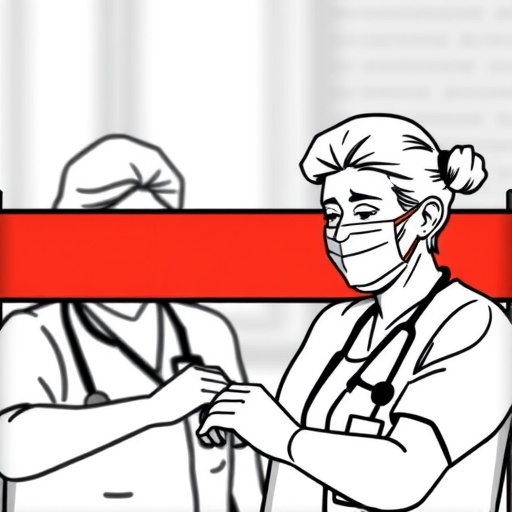In recent years, the demographic shift towards an aging population has profoundly impacted healthcare systems worldwide. The increasing number of older adults necessitates a reevaluation of care delivery frameworks, particularly emphasizing the role of family and community nurses. A recent study published in BMC Nursing provides valuable insights into the perceived barriers and facilitators that these nurses encounter while caring for older adults. This descriptive qualitative study, authored by Santomauro et al., highlights key factors that influence the quality of care provided in community settings.
Nurses operating in family and community health are often at the frontline of elder care. Their role is not restricted to administering medication or performing routine health checks; rather, they encompass a holistic approach that addresses emotional, social, and physical well-being. This multifaceted perspective is crucial as older adults frequently experience various challenges, from chronic illnesses to social isolation. The findings of the research reveal how these professionals navigate these complex circumstances to provide optimal care.
One significant barrier identified in the study is the insufficient training that many community nurses receive regarding geriatric care. While nursing programs often touch on this specialized field, the rapid evolution of health issues affecting older adults necessitates ongoing education and training. Community nurses expressed a need for more robust training programs that not only cover the clinical aspects of elder care but also explore the psychological and social dimensions of aging. This education gap can lead to feelings of inadequacy among nurses, impacting their confidence and potentially compromising patient care.
In addition to the training challenges, the study revealed that resource limitations severely hinder the effectiveness of community nursing practices. Many nurses reported struggling with inadequate staffing levels and a lack of essential equipment and supplies. These constraints can impede their ability to carry out comprehensive assessments and interventions. As the demand for elder care services continues to rise, addressing these resource gaps becomes imperative to ensure that nurses can meet the needs of older adults effectively.
The study also shed light on the importance of collaboration between healthcare professionals and community organizations. Nurses are often required to collaborate with various stakeholders, including social services, community health workers, and family members. Effective communication and a coordinated approach can enhance the quality of care provided to older adults. However, the research indicates that silos within healthcare systems frequently obstruct these collaborative efforts, limiting the potential for holistic care.
Family involvement in the care process emerged as a significant facilitator identified by the nurses interviewed. When family members are engaged in care planning and decision-making, it can lead to improved health outcomes for older adults. Family members can provide essential support, insights into the patient’s history, and assistance in navigating complex healthcare systems. However, the study notes that, at times, family involvement can also present challenges, particularly when family dynamics are strained or when there are conflicting opinions on care approaches.
Another salient factor impacting the care of older adults is the emotional resilience of community nurses themselves. The emotional toll of working with an aging population and navigating complex health issues can lead to compassion fatigue and burnout. The study highlights the need for institutional support systems that offer mental health resources and coping strategies for nurses. A mentally healthy workforce is crucial for sustaining high-quality care and enhancing job satisfaction among nurses.
Innovation in healthcare delivery models also plays a pivotal role in addressing the barriers faced by community nurses. Telehealth services have gained traction as a viable solution for delivering care to older adults, particularly those in remote or underserved areas. The researchers noted instances where telehealth facilitated better access to specialists and resources, alleviating some pressures on community nurses. However, for telehealth to be effective, both nurses and patients need adequate training and access to technology, raising questions about equity in care provision.
The study further underscores the critical role of policy in shaping the landscape of elder care. Policymakers are challenged to develop and implement guidelines that foster an environment where community nurses can thrive. By recognizing the unique challenges faced by community nursing professionals, policies can be crafted to increase funding, improve training programs, and incentivize collaborative practices. The shift towards aging-in-place models emphasizes the necessity for such pragmatic policy reforms.
Looking ahead, the implications of this research extend beyond community nursing. The need to understand and better support elder care is becoming urgent as populations age. Stakeholders across the healthcare spectrum—educational institutions, government agencies, and healthcare organizations—must work collaboratively to ensure that nurses are equipped to provide the best possible care for older adults.
The findings from Santomauro et al. serve as a call to action, urging healthcare systems to reassess and redesign their approaches to elder care. Every barrier identified in the study presents an opportunity for innovation and improvement. By addressing these concerns, the quality of life for older adults can be positively impacted, ensuring they receive the dignified care they deserve.
In conclusion, the study by Santomauro and colleagues illuminates the complexities surrounding community and family nursing for older adults. While barriers exist, facilitators provide a foundation upon which improvements can be built. The recommendations stemming from this research call for comprehensive strategies aimed at enhancing training, addressing resource shortages, fostering collaboration, and supporting nurses’ emotional well-being. As our societies continue to age, the role of community nurses will only grow in importance, making it imperative to address these challenges head-on for the benefit of both healthcare providers and the older adults they serve.
Subject of Research: Perceived barriers and facilitators to family and community nurses’ care for older adults.
Article Title: Perceived barriers and facilitators to family and community nurses’ care for older adults: a descriptive qualitative study.
Article References:
Santomauro, I., Bassi, E., Busca, E. et al. Perceived barriers and facilitators to family and community nurses’ care for older adults: a descriptive qualitative study.
BMC Nurs 24, 1259 (2025). https://doi.org/10.1186/s12912-025-03890-4
Image Credits: AI Generated
DOI:
Keywords: community nursing, elder care, barriers, facilitators, healthcare policy, telehealth, emotional resilience.
Tags: aging population healthcare impactbarriers to geriatric nursing educationchronic illness management in seniorscommunity nursing challengesemotional support for older adultsfacilitators of senior careholistic elder care approachesnursing care for elderly patientsnursing roles in elderly carequality of care in community nursingsocial isolation in elderly populationtraining for community nurses





